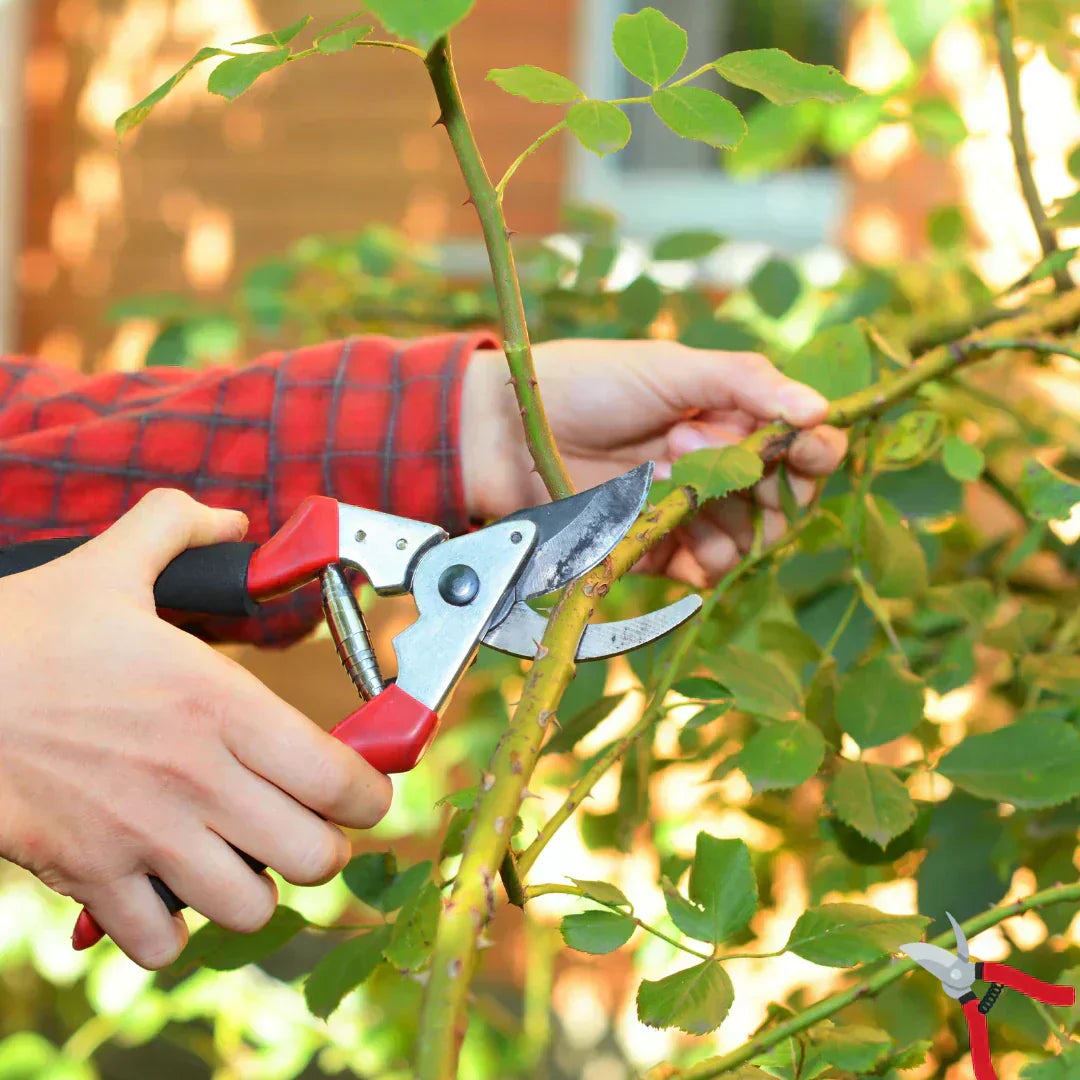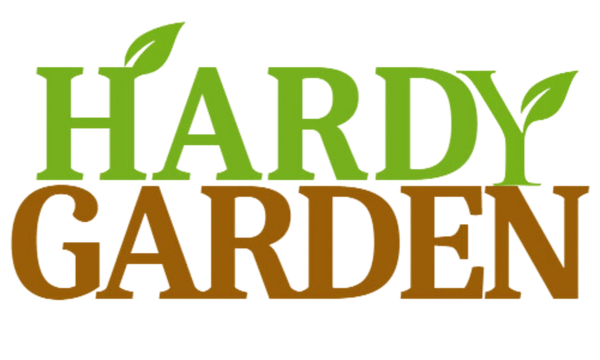
What is Pruning and It's Benefits
What is pruning? Though it may seem like a simple task, pruning plays a crucial role in enhancing the overall health and appearance of your plants.
In gardening, landscaping, and agriculture, pruning is vital for improving plant health, controlling growth, and ensuring better yields, whether it’s flowers, fruits, or vegetables. Proper pruning also helps create visually appealing landscapes by maintaining shape and size.
In this blog, we’ll answer what pruning is, explain why it’s so important for your plants, and provide tips on how to prune effectively to keep your garden thriving.
What is Pruning
Pruning is the process of selectively removing specific parts of a plant—such as branches, buds, or roots—to improve its health, shape, and productivity. The goal is to support strong, balanced growth while eliminating dead, diseased, or unproductive areas.
Pruning isn’t just about making plants look neat—it’s a vital part of plant care that influences everything from airflow and sunlight penetration to flowering and fruit production.
Types of Pruning
Different pruning techniques serve different purposes. Here are the most common types:
Pinching
Pinching means using your fingers to remove the soft tips of young stems. This helps plants grow fuller and produce more branches and flowers.
You can pinch:
- Herbs like basil, mint, and oregano
- Flowers like petunias, zinnias, and coleus
- Houseplants like pothos and philodendron
It’s an easy way to keep your plants looking healthy and full without needing any tools.

Topping
Often used on trees, topping cuts back large branches or the central stem to reduce height. It’s typically discouraged unless necessary, as it can stress the plant and lead to weak regrowth.
Thinning
This involves removing entire branches back to the main stem or trunk. Thinning opens up the plant to improve light penetration and air circulation, reducing the risk of disease.
Raising
Raising refers to removing the lower branches of a tree to clear space for walkways, buildings, or visibility. It's common in landscaping and urban settings.
Reduction
Reduction is a pruning technique used to decrease the overall size of a plant or tree by cutting back longer branches to a smaller, lateral branch. This method helps control overgrowth, maintain the desired shape, and prevent plants from encroaching on buildings, power lines, or walkways. For thicker branches, using the right tool—such as a pruning chainsaw—makes the job safer, faster, and cleaner.

How to Prune Properly
1. Prepare the Right Tools
Before you begin, gather the tools you’ll need. Quality tools ensure clean cuts that heal quickly and don’t damage the plant.
Essential Tools:
-
Hand pruners (bypass pruners) – for small stems and branches
-
Loppers – for thicker stems up to 2 inches in diameter
-
Pruning saw – for larger branches
-
Hedge shears – for shaping hedges and shrubs
- Gloves – to protect your hands from thorns and sap. Choose long gloves and thorn-proof.
- Chainsaw- Essential for cutting large, woody branches or managing mature trees.
Always clean your tools before and after use with rubbing alcohol or a bleach solution to prevent spreading diseases.

2. Understand Your Plant’s Growth Pattern
Every plant has a natural growth habit. Take time to understand:
-
Where new growth emerges
- Which branches are fruit-bearing or flowering
-
Whether it blooms on old or new wood
Knowing this helps you avoid removing vital parts and improves the plant’s performance.
3. Identify What to Remove
- Before you make any cuts, inspect the plant closely and prioritize what needs to go:
- Deadwood – Dry, brittle branches that snap easily
- Diseased or pest-infested areas – Show signs like discoloration, black spots, holes, or mold
- Crossing or rubbing branches – These cause wounds and stress
- Water sprouts or suckers – Vigorous shoots that grow straight up and sap energy
- Weak or thin growth – Especially if it’s crowding more productive stems
4. Make Clean, Correct Cuts
The way you cut is just as important as what you cut:
-
Angle your cuts at 45 degrees, about 1/4 inch above a bud that faces outward. This encourages new growth away from the plant center and prevents water from settling on the cut surface.
-
Cut just outside the branch collar (the slightly swollen area where a branch meets the trunk) when removing entire limbs. Cutting flush with the trunk or too far from the collar can slow healing or invite disease.
-
Avoid leaving stubs – they don’t heal properly and can attract pests.
Tip: Make small, frequent cuts rather than large, aggressive ones. You can always prune more, but you can’t put a branch back once it's cut.
5. Prune at the Right Time
Timing is crucial. Prune at the wrong time, and you could reduce flowering, stress the plant, or encourage unwanted growth.
-
Late Winter/Early Spring: Ideal for most trees and shrubs before new growth starts
-
After Flowering: For spring-flowering shrubs like lilacs, forsythia, and azaleas
-
Mid to Late Summer: To control size and shape or remove dead blooms (deadheading)
- Fall: Avoid heavy pruning, as it may lead to winter damage in some climates

6. Step Back and Assess Your Progress
As you prune:
-
Pause every few minutes to view the plant from a distance.
-
Check for symmetry and balance.
-
Ensure you’re not over-thinning or altering the natural shape too drastically.
It’s easy to get carried away—visual checks keep your pruning purposeful.
7. Practice Regular Maintenance
Don’t wait for plants to become overgrown. Regular light pruning:
-
Prevents major problems
-
Maintains health and shape
- Reduces the need for drastic cuts later
Benefits of Pruning
1. Promotes Plant Health
Pruning removes dead, diseased, or damaged branches that could attract pests or spread infections. By eliminating these weak areas, the plant can focus energy on healthy growth and recovery.
2. Encourages New Growth and Flowering
When you remove overgrown or unproductive parts of a plant, you stimulate the growth of new shoots and buds. This is especially beneficial for flowering plants and fruit trees.
3. Controls Size and Shape
Unchecked plant growth can lead to overcrowding, poor air circulation, and an unbalanced look. Pruning helps maintain a plant’s ideal size and aesthetic shape, especially in formal gardens and landscape designs.
4. Improves Sunlight Exposure
Dense foliage can block sunlight from reaching lower branches or nearby plants. Pruning opens up the plant canopy, ensuring that all parts receive the light they need to thrive.
5. Boosts Plant Strength and Structure
By removing weak or crossing branches, you help plants develop a stronger, more stable framework. This is especially important for young trees and shrubs that are still establishing their shape.
6. Enhances Safety
Overgrown trees or shrubs can pose safety risks, whether it’s a low-hanging branch near a walkway or dead limbs that could fall during a storm. Pruning reduces these hazards.
7. Improves Harvest Quality
For fruit-bearing plants and trees, proper pruning directly affects the quality and quantity of your harvest. It allows more energy to be focused on producing healthy, ripe fruit.
Conclusion
Pruning is more than just cutting branches — it's the key to a healthy, thriving garden. It helps plants grow stronger, keeps diseases away, and makes your garden look its best. Now it’s time to implement that knowledge. And it all starts with the right tools.
Explore Hardy Garden’s trusted pruning tools — designed to make every cut clean, easy, and effective!
